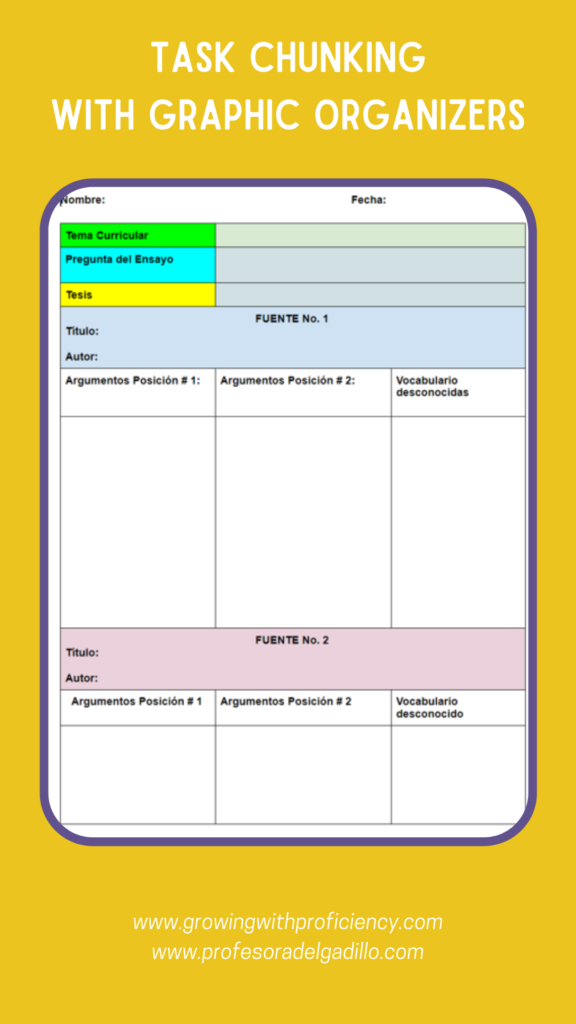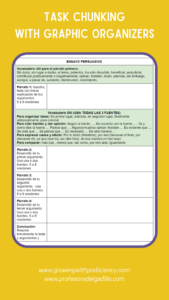Ready or not, here we go. Our students will be taking the full AP Language and Culture Exam next month. We only have a few weeks left, but these weeks are very important. We need to be intentional so our students can have the best possible chance, especially with the free response questions.
How? In our new, two-part blog post series, we will share our 5 top strategies on how to tackle the free response questions when time is running out, even if you’re behind the screen.
The challenges of this year are real and big, but we still have a few weeks before our students sit in front of a full AP exam. During this time, we would like to focus on the free response questions. We feel our students can show their proficiency much better in this second section of the test, so we want to focus on this.
In Part I of this blog post series, we will share with you the first two strategies. In Part II, we will share our last three strategies to help your students with free response questions. Now, let’s start with our strategies.
#1 - Provide or Create Model Texts

One of the most common questions our students ask us when they have to write the formal email, essay, the cultural comparison, or even the simulated conversion is, “How do I start?” We may think our students already know how to write a formal response or thesis, or how to elaborate or to compare, but the reality is that a lot of them don’t even know how to do it in their first language.
We can explain in detail how to complete all these tasks, but at the end, it is so much more efficient and effective to show them. You will get these “AHA” expressions from them more often when you show them how a great formal response or thesis looks. Providing model texts to your students will not only give them the visual of what elements they need to include in all these tasks but also make the tasks doable and accessible.
What is a Model Text?
It’s a text that exhibits all the elements of successful writing or speaking in a given context. Where can you find them? Our #1 place to find these model texts is on the AP Exam College Board site. Every year the College Board puts together samples of the different responses by score. Those samples are gold, and you can use them with your classes at any time. Click here to find the samples for the AP Spanish Language and Culture Exam.
Can you prepare your own model texts or use samples from your students? Of course you can! Using samples from your students is also very powerful to create connections with them. Using their work as part of your curriculum is a great practice.
Dissecting the Model Text
Once you have identified your model text, have your students identify the important elements and desirable language of that specific text. Those elements and language are the ones you’re looking for in an exemplary text.
For example, in the argumentative essay, ask your students to identify the thesis, supportive arguments, use of the different sources, and language that make that text successful. We also like to ask students to identify impressive language features.
Behind the screen, we like to use a tool that allows the entire class to see a student’s dissection. Tools like Nearpod, PearDeck, GoFormative, or Jamboard are great.

Focus On Simple Features of Model Text
When your students dissect the model text, there will be tons of great features and elements you may want to highlight and go deeper with. However, we only have a few weeks before the exam. You know your students best, and where they are and what they need. Focus on features that will create the biggest impact on their performance.
This year, we have a lot of students who are only in the intermediate low level. Should we focus on advanced structures? Not really. We want to focus on simple structures; structures that they’ve already acquired. We can show them how they can use those simple structures and simple language to complete the tasks. Making these tasks accessible and doable to them is huge at this point.


#2 - Chunk Tasks Using Graphic Organizers
The four response tasks of the AP exam require students to complete several steps. They need to read, understand, identify, analyze, and then complete the task itself.
Chunking those steps will help them complete the tasks easier and will keep the level of engagement high and level of frustration lower. Here are different ideas on how to do that with each task:
EMAIL REPLY:
- Have students read the email and identify the following elements:
- Who is sending the email?
- Why?
- What is the role of the student?
- What is the email asking?
- Have students brainstorm possible answers to the questions and possible questions as a class.
- Have students complete the task and provide scaffolds. Click here to receive some of the scaffolds in your inbox.
Argumentative Essay:
Have students read the question or prompt and write a simple response assuming a position.
Then, students can read the sources in pairs or groups. Provide a graphic organizer so they can write at least one argument in favor, or against, for the sources.
Have the students write the essay one paragraph at a time with specific instructions per paragraph. Provide scaffolds to help them start each paragraph. You can use the language identified by students when they were dissecting the model text.

Cultural Comparison:
Have students read the prompt in pairs.
Provide a Venn Diagram or 3 Column Organizer so students can brainstorm similarities and differences related to the topic.
Provide scaffolds and have students create an outline of the cultural comparison before they record.
Simulated Conversation:
Have students identify the situation: Who they’re talking to, why they’re talking, who they are, and if it’s a formal or informal situation.
Give students the script and let them identify what they need to do each time they respond. Have them brainstorm possible sentence starters or expressions.
Play the audio or provide the script. Stop the audio, then as a class also brainstorm possible answers following the script.
Finally, pair up students with different levels of proficiency. Let the most proficient students go first to complete the task so the second student will have one more opportunity to get more ideas.
More Strategies to Help Your Students
This was a lot, but hopefully you either feel validated with the strategies you’re already using or you added even more tools to use in your class during these last few weeks. Remember, we want to be intentional during this time, and these strategies will help you focus your students on what will help them pass the AP Language & Culture Exam.
In the second part of this series, we’ll share with you our last three strategies to help your students have their best chance at their AP Language & Culture Exam, especially the free response questions. Click here to read.
By Bertha Delgadillo and Claudia Elliott
Check out our conversation about the topic here via my YouTube channel.
Make Your Advanced Spanish Course Accessible
Teaching advanced Spanish courses such as AP and you aren’t quite sure how to start or how to break down information so that all of your learners can understand and stay in the target language. Spending countless hours grading and providing feedback? We were once there, and we want to share with you what we have been doing for years to save us time and sanity with upper level classes while engaging learners in meaningful and effective units Click here if you want to know more!



One comment